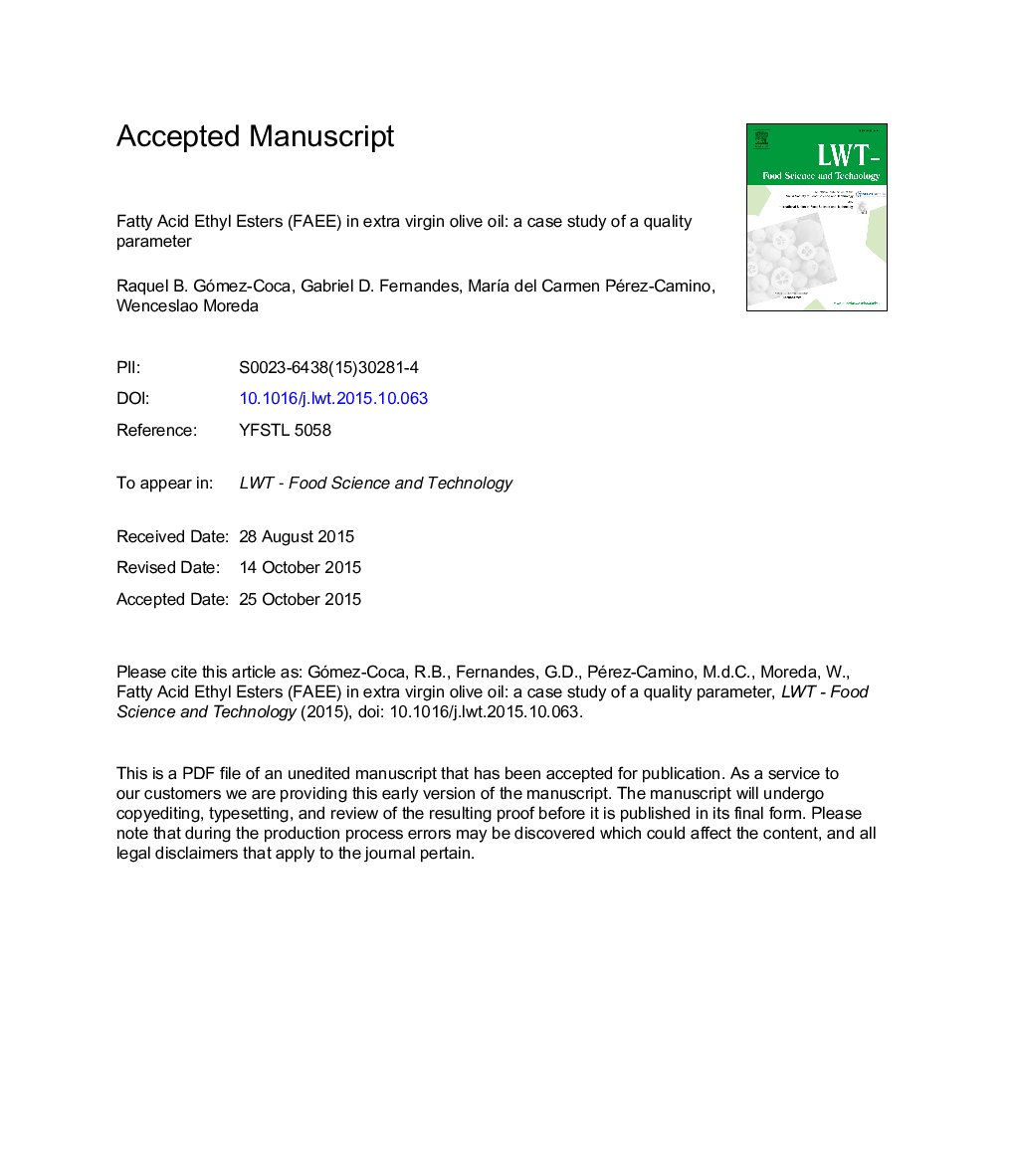| Article ID | Journal | Published Year | Pages | File Type |
|---|---|---|---|---|
| 6400979 | LWT - Food Science and Technology | 2016 | 29 Pages |
Abstract
Nowadays the olive oil industry is facing strict demands regarding the fatty acid ethyl ester (FAEE) presence in extra virgin olive oil, since a 30Â mg/kg limit must be applied to oils produced from 1st March 2016. This decision was made under the assumption that the concentration of FAEE is something fixed. Results here demonstrate otherwise. After a study under controlled storage conditions (temperature, free acidity and volatiles), it is shown that the FAEE concentration increases dramatically over time once the oil is bottled. This, in the case of extra virgin olive oils obtained from mature healthy fruits, may lead in a few month time to FAEE concentrations above the limit permitted to classify the oils as extra virgin, underlying the need of applying certain working practices systematically such as filtering prior bottling, and strict control of the storage temperature.
Keywords
FAAEPTFEPrOHIOCEVOOEtOHFAEESDR1-PropanolC18:1flame ionization detectorEthanolFatty Acid ethyl estersinternal standardFatty acid alkyl estersOleic acidAcidityFiltrationFIDExtra virgin olive oilVolatilesMethanolfatty acid methyl estersFAME یا fatty acid methyl esters MeOHpolytetrafluoroethyleneGas chromatography
Related Topics
Life Sciences
Agricultural and Biological Sciences
Food Science
Authors
Raquel B. Gómez-Coca, Gabriel D. Fernandes, MarÃa del Carmen Pérez-Camino, Wenceslao Moreda,
